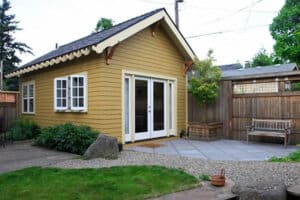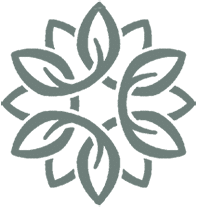ADUs as One Alternative for the Highest Functioning, Low-Risk Unsheltered People
 Executive Summary
Executive Summary
Affordable housing was a growing problem in the United States before the current pandemic swept across the world. The effects of the pandemic—a slowed economy resulting in job losses—expanded the number of people without permanent shelter, creating an urgent need for safe, dignified housing solutions. Accessory dwelling units (ADUs) provide one such solution. One that not only benefits the unsheltered but homeowners who, themselves, may be struggling to meet their financial obligations due to pandemic-related hardship.
The following is a framework for an ADU housing program with incentives for homeowners to install an ADU with the specific purpose of housing previously unsheltered persons. It’s envisioned as functioning as a state, county, or city government supported or sponsored program, with collaboration between government agencies, corporate sponsors, and philanthropic organizations.
Such a program would provide incentives like government financed low-interest rate loans for the ADU and discounts or waiving of fees for some of the property development costs. Under this type of model, a $30,000 tiny home purchased at a 3% interest rate on a 30-year loan would cost as little as $126.48 per month. A 40-year loan with the same interest rate would come in at $107.40 per month. Homeowners would receive monthly rent payments estimated to be between $700 to $1,200 per month, with the amount being decided by the governing agency. The amount would be enough to cover the monthly payment of the ADU, with the rest providing significant additional income for the ADU owner. For the government, the costs for those not on SSI would also include food, mental health services, medical care, transportation and a few other services. However, the total cost per person would come in around $1,500 per month, with a further breakdown detailed later in the white paper.
The framework includes an extensive screening process to identify the lowest risk unsheltered people to participate. For example, people with a criminal record, addiction problems, or a mental health condition that makes them a danger to themselves or others would not qualify for this program. Multiple agencies, such as the department of health and independent mental health practitioners, would be involved in the screening process to assure the safety of program participants both before, during, and after placement.
This framework relies on strict, well-defined rules for all involved. For example, there would be zero tolerance for illegal substances or other illegal activity on the property. The owners of the ADU’s essentially become landlords, who would need to be granted a right to evict to provide safety and reassurance as the property owners. They would partner with the governing agency but get the final say in who comes onto and stays on their property. ADU owners would also have access to an ongoing, 24-hour hotline to address concerns about their own safety or any psychological issues or drug/alcohol problems of tenants.
The framework makes room to provide mental health services and resources for tenants through partnerships with mental health clinics and major universities with Master’s interns in need of training hours and hands-on experience. In the LA area, for example, the Marina Airport Counseling Center [1] has already agreed to this arrangement to provide trainees and supervise a program to serve unsheltered persons. Most major metropolitan areas have similar access to students at major universities who are hungry for training and in need of hands-on experience. These same areas are also full of people struggling to get the care they need with the little resources they have. With this framework, they’d be able to get that care while living in a stable, dignified home.
There is also a valuable opportunity for highly beneficial partnerships between government and regenerative agriculture groups prepared to train unsheltered persons in marketable skills and techniques. Partnerships with regenerative agriculture specialists (Crop Swap LA[2], Alegria Farms[3], and Gabe Brown’s Understanding Ag[4]) and solar energy organizations (GRID Alternatives[5]) provide opportunities for the ADUs to be solar powered with tenants learning skills to feed themselves, the ADU owner, and the surrounding community.
There is an opportunity for the previously unsheltered persons to become a source of the healthiest food available by planting and cultivating regenerative gardens in the yard where the ADUs are located. These gardens can provide for the local neighborhood, inspiring change for the landlord and neighbors who would want to be included while the ADU tenants develop skills and increase their self-esteem. The ADU program could become an answer to soil conservation, better energy use, and the development of a sense of community among unsheltered persons who generally feel themselves outside the care or notice of society.
On a human level, this framework can provide a dignified way for unsheltered persons to gain stability and control over their lives. Financially, city, county, and state governments can reduce the cost of providing housing for unsheltered persons while assisting homeowners who need an additional source of income to keep their homes. The details of these cost savings will be presented in the paper using the best estimates gathered from a variety of credible sources.
An incentive ADU program provides housing and financial solutions direly needed in many areas. This basic framework provides the scaffolding for the adoption and adaptation of this type of program in areas across the United States.
Accessory Dwelling Units (ADUs) as an Opportunity to Address a Growing Housing Crisis
The effects of the current global pandemic have put the most vulnerable of our population at risk for homelessness. Those with no familial or social safety net find themselves unsheltered and in circumstances that make it difficult to find and keep a job, let alone housing. While the job market is improving, those in certain demographics and population segments haven’t reached pre-COVID stability or employment and income levels.
Unemployment hit a high in April 2020 with a 14.14% unemployment rate, which disproportionately affected people of color, women, those in service occupations, and those with lower education levels.[6] As of January 1, 2021, the overall unemployment rate is down to 6.49%. However, the months that it took to get to that point have pushed many people who were living paycheck to paycheck or struggled to stay on the margins of stable housing out of their homes and into shelters and streets.
City, county, and state governments have scrambled to find effective, affordable solutions. According to the 2020 Greater Los Angeles Homeless Count, there was a 12.7% rise in unsheltered persons, with 66,436 people lacking permanent housing.[7] These numbers came in January of 2020 before the impact of COVID-19 would cause 599,000 workers to lose their jobs in LA county. Of those who find themselves unsheltered, an increasing number are families with children.
There is clearly a need for immediate, safe housing for a growing number of people.
This framework includes:
- changes in current ADU development standards
- changes in eviction laws
- incentives for homeowners to purchase and install ADUs
- comprehensive screening and supervision of tenants
- support for homeowners to maintain their control over their property
- clear rules and guidelines to find the lowest risk unsheltered persons to participate
- support for tenants in the form of skills training and mental health services
More importantly, this framework provides a way to supplement the income of homeowners while providing dignified, safe housing for the low-risk unsheltered. It’s another avenue for getting people back into long-term stable employment and living conditions.
Financial Feasibility, Incentives, Costs, and Savings
An ADU sometimes called a granny flat or backyard cottage, among many other names, is a secondary house or apartment on the building lot of a larger planned or existing home. These small housing units include a kitchen, bathroom, and at least one bedroom, enough for a private, dignified living space. Some may have a seating area or more than one room depending on the design, with square footages ranging from the tiny at 120 square feet to the larger 1,000 square foot units.
Organizations like the Housing Innovation Collaborative offer a wide range of design information and options, including one of the most economical solutions for supporting unsheltered persons in a short timeframe—prefabricated tiny homes.[8] For the purposes of this framework, the ADUs would need to be mobile so that they could be removed should the homeowner decide to leave the program.
Tiny homes can cost as little as $25,000 to $30,000 per unit. To make those tiny homes even more affordable for homeowners, a government agency or bank looking to fulfill community service requirements would finance the purchase of the prefabricated tiny homes/ADUs. The goal is to keep initial costs down to expand the number of homeowners who can participate. Homeowners would need to be pre-qualified or put their current mortgages as collateral to ensure full payment on the loan.
There would be some variation in mortgage prices due to local variances in taxes and permits, but overall, it’s an affordable expense for everyone, especially considering that homeowners would receive much more than that in monthly rent payments. For the government, the initial cost of the ADU is a fraction of the $531,000 average per unit cost (in LA) of building single unit affordable housing.
Because of the drop in costs of the initial housing, and further cost reductions to be covered later in this document, the government could pay a monthly rent to homeowners that falls between $700 to $1,200 per month. (The governing body would need to determine fair rates based on their location.) At that rate, homeowners would cover the cost of the loan payment with extra to apply toward their home mortgage or other expenses.
Further enticements for homeowners could include lowered or waived fees for water, sewer, and power connection fees. On average, it can cost anywhere from $1,500 to $4,000 to connect to city sewer and water, depending on the city, lot orientation, and other factors unique to each lot. A high estimate of $10,000 for all hookup expenses would still only put the monthly mortgage per ADU for a 30-year loan (3% interest rate) at $168.64 and $143.19 per month for a 40-year loan (3% interest rate).
An established, reduced, or other utility connection fee incentives can further reduce the initial cost of installing the ADU, making them a better initial investment for the homeowner.
There is also a cost saving that comes from people living independently with the support to find a job, get medical care, and live in a stable, safe home. In these conditions, people are more likely to get preventative care, reducing the use of ambulatory or emergency services as primary medical care.
In this aspect of cost savings, the numbers speak loud and clear. Yearly taxpayer costs to care for unsheltered persons can vary widely, from $22,372 per person per year as estimated in a Philadelphia study[9] to $50,000 to $80,000 in a 2017 estimate from the U.S. Interagency Council on Homelessness.[10] A 2014 study found that access to stable housing for unsheltered persons reduced the use of emergency medical services by 3%, taking the yearly expenditures per person from $62,504 to $25,925, a $36,579 difference.[11]
Just looking at the monthly expenses associated with different aspects of this framework, the monthly estimates look something like the following:
|
Monthly Per Person Cost Estimate |
|
|
Expense |
Estimated Cost |
|
Rent |
$700 |
|
Counseling Support |
$200 |
|
Health Care |
$200 |
|
Food |
$150 |
|
Transportation |
$50 |
|
Miscellaneous |
$200 |
|
TOTAL |
$1,500 |
There will be some variation for families and other unexpected expenses, but overall, that’s an incredible saving over the $50,000 to $80,000 estimates. That’s better than even the low $22,000 estimate.
To sum it up financially, through the incentives and monthly rent payments, homeowners receive a second income and unsheltered persons gain stable housing in a residential neighborhood with access to skills training. Financially, the ADU framework is a win-win scenario for everyone involved.
Other aspects of this framework, which will be detailed in later sections, can further reduce costs. For example, by working with solar installation organizations like GRID Alternatives that provide training for low-income people and installation of solar panels on low-income homes, the ADUs could use solar power as their main power source. Tenants would have access to inexpensive or free mental health services through partnerships with local universities and mental health facilities, as will be detailed later. Tenants would also have the opportunity to learn regenerative agriculture techniques and manage a garden or yard area on the property to provide incomparably nutritious food for themselves, the homeowner, and neighbors.
ADU Development Standards
Thirty-two (32) states and even more cities have building codes and development standards that define acceptable ADUs based on the ADU’s footprint and square footage as well as limitations on the minimum lot size, among other stipulations.[12] ADU development standards vary widely from state to state and even from city to city. Some states grant cities the right to determine ADU development standards and regulations, while others leave it up to the county. California gives counties control over ADU development standards. LA County has enacted laws to make it easier for homeowners to build an ADU on their property.[13]
For example, approvals or denials of an ADU permit must be given within 60 days, which speeds up the building/installation process. Lawmakers have also passed laws to limit fees on units under 750 square feet with added incentives to promote ADU construction offered to low and moderate-level households. LA County already has favorable standards, and any government agency can look to these standards as a baseline for how to promote and ease homeowners through the process.
However, unsheltered persons need housing immediately. Because we are working with mobile ADUs, development standards that grant permits within a few days can get people safely housed faster. It will require additional changes or perhaps an added addendum or two to the guidelines that specifically govern ADU development.
Eviction Laws and Practical Safety for Homeowners and Tenants
First and foremost, homeowners need to feel safe on their own property. The ADU framework is designed for the lowest risk, highest functioning individuals, couples, and families experiencing homelessness. These are the people who are under-employed, unemployed, and part-time employees without the means to get into stable housing.
All potential tenants would have to go through a comprehensive screening process that would likely involve multiple agencies. The application process would include psychological screening conducted by specially trained staff. People with a criminal record, addiction problems, chronic homelessness, or mental health issues that make them a danger to themselves or others would not be allowed into the program. Ideally, unsheltered persons who do not qualify to live in an ADU would have other housing options like those proposed in the other white papers or other creative alternatives.[14]
Unsheltered persons accepted into the ADU program would be required to sign an agreement stating that they will not use illegal drugs or bring any unauthorized person onto the property. If the tenant breaks the agreement, eviction is the consequence. There can be no tolerance for breaking the ground rules. Breaking these types of rules would lead to expulsion from the ADU program. It is important that the homeowner always has eviction rights, even if the standard eviction laws say otherwise. This will likely require legislation alternatives for this program to fully function.
Homeowners would also have the option to add their own stipulations. For example, a family with children may not want alcohol or legal marijuana on the premises, or they may require quiet hours or other rules that help them maintain control over the atmosphere and safety of their property.
The rules would have to be absolutely clear, with the tenant signing a contract that includes a signature from the supervising social or caseworker. Breaking homeowner-added rules would not lead to expulsion from the ADU program, however. Rather, it might be a matter of finding a better fit with a different homeowner. But, again, homeowners always maintain the right to evict, keeping property control in their hands.
This type of arrangement may require changes or additions to current eviction laws in some jurisdictions because of the unique nature of the program. For example, in LA County, tenants have the right to organize and participate in tenants’ organizations. There may need to be an addendum added to define eviction laws to fit within the scope of the ADU program’s framework to ensure the safety and autonomy of homeowners. Another potential addendum may need to address the time period for notices of eviction, again, to maintain the safety of the homeowner and integrity of their property.
Some homeowners may find that the program does not work for them and their lifestyle. In those cases, the mobile ADU could be removed and used on another property. That offers two-fold protection: 1) Homeowners are not stuck in a program that does not work for them, and 2) Homeowners cannot take advantage of the incentives without housing unsheltered persons.
Consistent, Ongoing Homeowner and Tenant Support
There are many practical concerns with a framework like this. However, at the center of it are people who need care and consideration. To ignore the human needs in favor of the physical needs would not support the whole person, diminishing the chances of success for tenants and homeowners.
The framework would include online counseling for tenants in the initial stages as needed on a case-by-case basis. This will help new tenants transition from a life of unpredictable homelessness to stability and safety, which requires a different mindset. Unsheltered persons often experience trauma in their time without a home. This counseling will make sure they have access to the services they need to help in their transition.
In the long-term, there’s potential for continued access to mental health care through low fee clinics like the Marina Airport Counseling Center in the LA area. Programs like that outlined in the Permanent Supportive Housing white paper that details bringing together vulnerable populations with Master’s program interns at local universities can continue counseling as needed. It is an incredibly low-cost option for unsheltered persons to get ongoing support in a way that’s financially feasible.
Homeowners would have access to a 24/7 hotline or 911 operators trained and updated in the program’s protocols where they can get support with any issues that may come up with tenants. Everyone deserves to feel safe on their own property, and while this hotline would add to the cost, it is an essential element of a working framework.
Partnerships for a Better Future: Regenerative Agriculture and Solar Power
In some areas, it may make sense to partner with philanthropic groups and organizations to assist tenants in acquiring skills, gaining self-esteem, and integrating them into the community. Jamiah Hargins of Crop Swap LA, Gabe Brown with Understanding Ag, and Alegria Farms have all agreed to provide training and assistance to train unsheltered persons in regenerative agriculture methods. As part of the ADU program, tenants could be required to work a garden on the homeowner’s property using these methods and techniques.
These techniques are needed for the future of agriculture and build skills and confidence. The gardens, especially if trees are planted, are likely to provide all produce needed by the family and unsheltered person or people and would supplement what is needed and provide access to nutrient-dense food.
Every person has a desire to belong, to contribute to their community. These gardens are a chance for tenants to provide nutritious food for themselves, the homeowner, and any other neighbors or community members who would like food. Many unsheltered people feel forgotten or invisible to society at large. This aspect of the framework gives them a way to become contributing members of society. They won’t just be living in the community. They will be a valuable, accepted part of it.
Housing Program for Diverse Communities
Many of the organizations mentioned are local to LA County. However, this framework can work in any location by building collaborations between government agencies and local organizations. Each county or city can determine the rules, development standards, and partnerships that make sense in and for their community.
ADU housing is more than a program. It is an opportunity to build confidence, self-reliance, and stability into the lives of tenants and homeowners. Pandemic life has discouraged many, pushing them to living conditions they never imagined they would experience. This type of solution can get people back on their feet and in the workforce with dignity.
Post-related online resources
Marina Airport Counseling Center
Crop Swap L.A.
Algeria Farms
Understanding AG: Gabe Brown
Grid Alternatives
Housing Innovative Collaborative
Accessory Dwellings
White Paper Archive Page
___________
[1] The Airport Marina Counseling Service. https://www.amcshelps.com/about
[2] Crop Swap LA. https://www.cropswapla.com/about
[3] Alegria Soxx Farms. http://alegriafarms.com/
[4] Understanding Ag. https://understandingag.com/partners/gabe-brown/
[5] GRID Alternatives. https://gridalternatives.org/
[6] Tracking COVID-19 Unemployment and Job Losses. Georgetown University Center on Education and the Workforce. https://cew.georgetown.edu/cew-reports/jobtracker/#tool-3-tracking
[7] 2020 Homeless Count Key Messages. Los Angeles Homeless Services Authority. https://www.lahsa.org/documents?id=4561-2020-homeless-count-key-messages
[8] The Housing Innovation Collaborative. https://housinginnovation.co/
[9] Poulin, et al. (2010). Service use and costs per persons experiencing chronic homelessness in Philadelphia: A population-based study. Psychiatric Services. 61(11), pp. 1093-1098. https://ps.psychiatryonline.org/doi/full/10.1176/ps.2010.61.11.1093
[10] Ending Homelessness in 2017. United States Interagency Council on Homelessness. https://www.usich.gov/resources/uploads/asset_library/Ending_Chronic_Homelessness_in_2017.pdf
[11] Mackelprang, et al. (2014). Housing first is associated with reduced use of emergency medical services. Prehospital Emergency Care. 18(4), pp. 476-482. https://www.ncbi.nlm.nih.gov/pmc/articles/PMC5102506/
[12] Accessorydwellings.org. https://accessorydwellings.org/adu-regulations-by-city/
[13] About ADUs. LA ADU Accelerator Program. https://adu.lacity.org/about-adus
[14] Strock, R. (2020). Permanent supportive housing. https://www.robertstrock.org/permanent-supportive-housing/
[14] Strock, R. (2020). Permanent supportive housing. https://www.robertstrock.org/permanent-supportive-housing/



